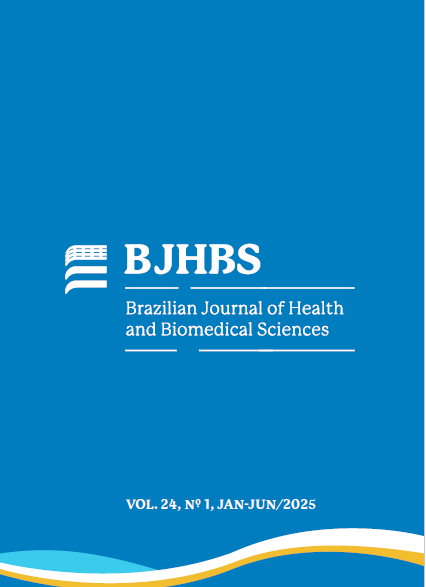Analysis of the occurrence of the mesiobuccal canal in maxillary first molars using cone-beam computed tomography in a Brazilian population
DOI:
https://doi.org/10.12957/bjhbs.2025.93429Abstract
Introduction: Although the success rate of endodontic treatment in molars can reach up to 91.7%, failures may occur due to the anatomical complexity of the canals and the presence of undetected canals, with the second mesiobuccal canal being the most frequently overlooked. Objectives: To assess the morphology of the first upper molar and the incidence of the second mesiobuccal
canal using cone-beam computed tomography. Materials and Methods: Retrospective secondary data were collected from patients at a reference radiology clinic in Maringá, Paraná, and then underwent imaging exams with the Prexion 3D tomography machine between December 2015 and May 2016. Results: A total of 174 patients and 221 first upper molars were analyzed, with a higher prevalence of three roots (93%) and the presence of the second mesiobuccal canal in 57.4% of the teeth. The most frequent Vertucci
classification was Type IV (38%). Conclusion: The study concluded that the first upper molar tends to have three roots and that the second mesiobuccal canal is present in more than half of the studied population, while the most common classification for this canal was Type IV.
Downloads
Downloads
Published
How to Cite
Issue
Section
License
Copyright (c) 2025 Brazilian Journal of Health and Biomedical Sciences

This work is licensed under a Creative Commons Attribution-NonCommercial 4.0 International License.
After the final approval, authors must send the copyright transfer agreement signed by the first author representing each additional author. In this agreement must be stated any conflicts of interest.
Brazilian Journal of Health and Biomedical Sciences de http://bjhbs.hupe.uerj.br/ is licensed under a License Creative Commons - Attribution-NonCommercial 4.0 International. 

